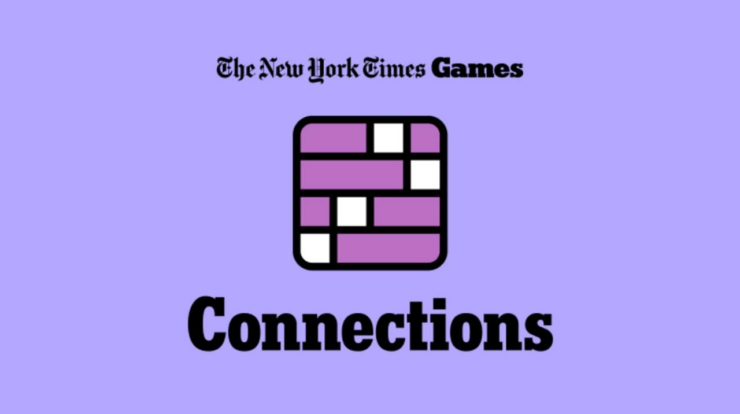
The New York Times (NYT) stands as a towering figure in the media landscape, with its extensive network of connections and partnerships playing a pivotal role in its success. This exploration into NYT connections unveils the intricate web of relationships that shape the Times’ content, distribution, and engagement strategies.
From collaborations with other media outlets to partnerships with influential organizations, the NYT has cultivated a network that amplifies its reach and impact. These connections provide access to diverse perspectives, enhance credibility, and foster innovation.
News & Media Landscape
The news and media landscape has undergone a transformative shift in recent decades, driven by the advent of digital technologies and the proliferation of online platforms. This dynamic landscape is characterized by a diverse range of players, including traditional media outlets, digital-native news organizations, and social media platforms.
Within this complex ecosystem, the New York Times (NYT) stands as a bastion of journalistic excellence and a trusted source of news and information. Founded in 1851, the NYT has established a reputation for rigorous reporting, insightful analysis, and a commitment to the highest standards of journalism.
NYT Connections: Network & Partnerships
Collaborations and Partnerships
The NYT has forged strategic alliances with other media outlets, organizations, and individuals to enhance its reach and impact. Notable collaborations include partnerships with ProPublica, The Marshall Project, and The Guardian, which have enabled the NYT to expand its coverage of investigative journalism, criminal justice, and international affairs.
Benefits of Partnerships
- Increased reach and audience engagement
- Access to specialized expertise and resources
- Enhanced credibility and reputation
Challenges of Partnerships
- Balancing editorial independence and collaboration
- Managing differing organizational cultures and priorities
- Ensuring fair and equitable distribution of credit and resources
Content & Distribution

Content Strategy
The NYT’s content strategy emphasizes in-depth reporting, original storytelling, and data-driven journalism. The organization’s reporters and editors strive to provide readers with comprehensive and nuanced coverage of current events, politics, business, and culture.
Distribution Channels
The NYT distributes its content through a variety of channels, including print, digital, and social media. The organization’s flagship print edition remains a highly respected and influential publication, while its digital platforms offer readers access to a vast array of news, analysis, and multimedia content.
Effectiveness of Distribution Channels
- Print edition maintains a loyal readership and generates significant revenue
- Digital platforms have expanded the NYT’s reach and increased its audience engagement
- Social media provides a platform for audience interaction and content promotion
Audience & Engagement: Nyt Connections
Target Audience
The NYT’s target audience consists of discerning readers who value in-depth journalism, informed analysis, and a commitment to truth and accuracy. The organization’s readers are typically well-educated, affluent, and have a strong interest in current events and public affairs.
Engagement Strategies
- Interactive features and multimedia content to enhance reader engagement
- Social media campaigns to foster audience interaction and community building
- Events and conferences to connect with readers in person
Business Model & Revenue Streams

Business Model
The NYT’s business model relies on a combination of subscription revenue, advertising, and other sources of income. The organization’s digital subscription model has been a key driver of its financial success, with a growing number of readers opting for paid access to the NYT’s premium content.
Revenue Streams, Nyt connections
- Digital subscriptions: Recurring revenue from paid subscribers
- Advertising: Revenue generated from display ads and sponsored content
- Other sources: Events, licensing, and merchandise sales
Innovation & Future Trends
History of Innovation
The NYT has a long history of innovation, dating back to its early adoption of new technologies. The organization was one of the first newspapers to launch a website and has continuously invested in digital platforms and new ways of storytelling.
Ongoing Efforts
- Exploring artificial intelligence and machine learning to enhance content discovery and personalization
- Developing new storytelling formats, such as virtual reality and augmented reality
- Investing in data analytics to better understand audience behavior and preferences
Potential Future Trends
- Continued growth of digital subscriptions and the decline of print readership
- Increased competition from social media platforms and other digital news sources
- The need for new revenue streams to support quality journalism
Conclusive Thoughts
As the media landscape continues to evolve, the NYT’s network of connections will undoubtedly remain a cornerstone of its operations. By leveraging these partnerships and adapting to changing consumption patterns, the Times ensures its position as a trusted and influential voice in the global news arena.
FAQ Explained
What are the key benefits of NYT’s network of connections?
Enhanced credibility, access to diverse perspectives, and opportunities for innovation.
How does the NYT leverage its partnerships to expand its reach?
Through co-produced content, cross-promotion, and access to new audiences.
What is the significance of the NYT’s content strategy?
It ensures high-quality, in-depth reporting, compelling storytelling, and effective distribution across multiple channels.





